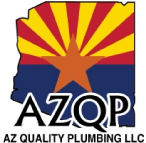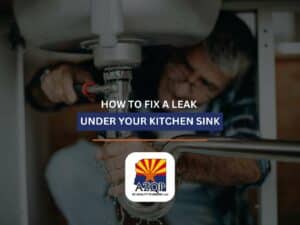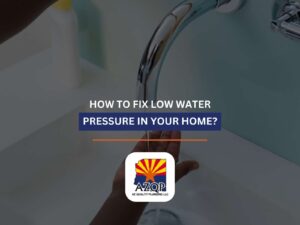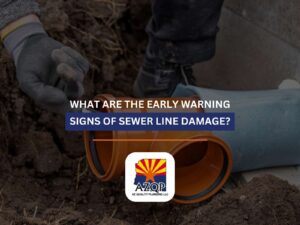How To Fix a Leak Under Your Kitchen Sink
Why Your Kitchen Sink Leaks Even When The Water Is Off
Finding a leak under your kitchen sink can be stressful, especially when water starts pooling inside the cabinet or the wood becomes damp. Kitchen sink plumbing problems, dripping pipes, and faulty faucet connections are common causes you can often identify and fix before major damage occurs. In this guide, we’ll show you how to locate the source of the leak, stop water damage, and repair your sink effectively.
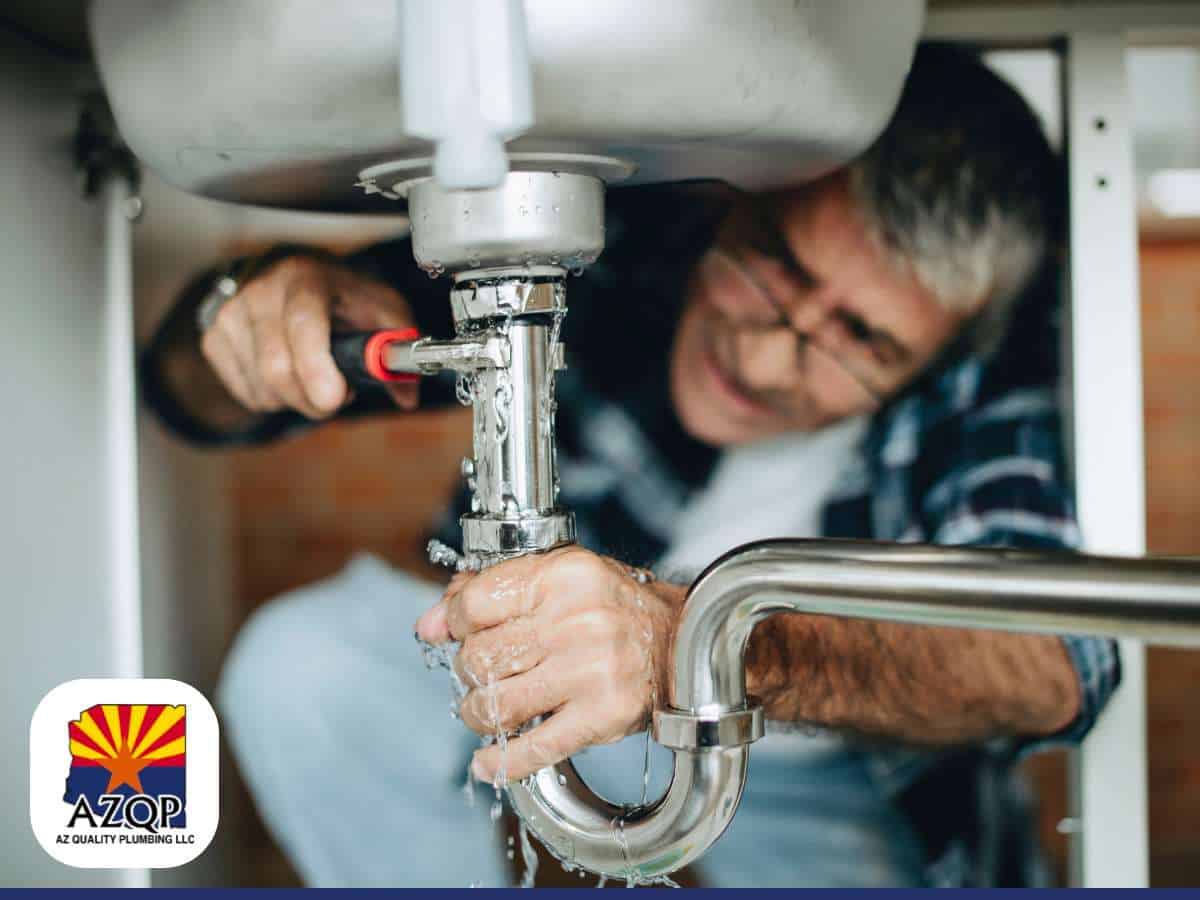
Why Your Kitchen Sink Leaks
Kitchen sink leaks can show up in different ways, and knowing the type of leak can help you identify the problem faster. Some leaks drip constantly, even when the faucet is off, signaling a persistent plumbing issue. Others only appear when the water is running, usually pointing to problems in the sink’s immediate plumbing system. To tackle the problem effectively, it helps to understand what causes leaks when the water is off versus when the faucet is on.
Leaks When The Water Is Off
A leak that continues even when the faucet is turned off usually signals a problem that won’t fix itself. Some of the most common causes include:
- Corroded pipes: Metal pipes can corrode over time due to mineral buildup and chemical reactions with the water, creating tiny holes that cause constant dripping.
- Faulty shut-off valve: Valves under the sink control the water supply to your faucet. If damaged or not sealing properly, water may continue to leak through the line.
- High water pressure: Excessive pressure can force small leaks to persist even when taps are closed. Installing a pressure regulator can help prevent this issue.
- Aging seals or gaskets: Over time, seals around connections and fittings can dry out or crack, allowing slow, steady leaks.
- Hidden slab leaks: If none of the visible pipes are leaking, the problem might be beneath your home’s foundation. In such cases, a professional slab leak repair is the safest way to prevent serious damage.
If you suspect one of these causes, turn off your home’s main water valve and call a licensed plumber in Maricopa. Persistent leaks often require professional assessment to avoid further complications.
Leaks When The Water Is On
If the leak only occurs when you turn on the faucet, the problem is usually in the sink’s immediate plumbing system. These leaks often result from water pressure issues or loose fittings rather than hidden pipe damage. Common causes include:
- Loose connections: Regular use and vibrations can loosen joints or couplings. Tightening these may stop the leak, but avoid overtightening.
- Damaged seals: Seals around the faucet base or drain assembly can wear out, letting water escape under pressure.
- Cracked pipes or fittings: Older or fragile pipes may develop cracks, particularly if exposed to extreme temperatures. Replacing the damaged section is the best solution.
- Leaky supply lines: Flexible hoses connecting your sink to the main water supply can degrade or shift over time, creating leaks when the tap is open.
Persistent leaks after tightening or resealing mean it’s time to call a plumbing company to examine your system for hidden damage.
Step-by-Step Guide To Fixing a Leak
Once you’ve found where the leak is coming from, you can decide whether to try a quick fix yourself or call a professional plumber for help. Here’s a step-by-step guide to help you get started:
1. Turn Off the Water Supply & Inspect the Area
Start by shutting off the water valves under your sink, then open the faucet to release any pressure. Wipe everything dry so you can clearly see where the leak originates. Look for corrosion, cracks, or buildup, all signs that you may need a plumbing repair rather than a simple adjustment.
2. Tighten Loose Joints
Loose fittings are one of the most common culprits. Use an adjustable wrench to carefully tighten them, but avoid overtightening, this can cause more damage. A snug fit is usually enough to stop small drips.
3. Replace Worn Seals Or Washers
If you notice cracked or flattened seals, replace them with new ones that fit your sink model. Proper sealing keeps connections watertight and prevents future leaks. Not sure which part you need? Take a picture or bring the old seal to a hardware store for reference.
4. Repair Or Replace Cracked Pipes
Minor pipe cracks can sometimes be patched with plumber’s tape or epoxy putty as a temporary solution. However, replacing damaged pipes is the only long-term fix. If the crack is near the wall or hard to reach, it’s best to call a licensed plumber.
5. Check Your Garbage Disposal
Leaks from the garbage disposal often come from loose mounting rings, hoses, or worn gaskets. Tighten the connections if possible, or schedule a garbage disposal repair if you notice continued dripping.
6. Test For Leaks Again
After you’ve made repairs, turn the water back on slowly and run both hot and cold water. Place a dry paper towel under the pipes to spot any remaining drips. If everything stays dry, great! If not, don’t ignore it, hidden leaks can cause serious water damage over time.
When To Consider Replacing The Sink
Sometimes, fixing a leak isn’t enough. If the sink itself is damaged or worn out, replacement may be the smarter investment. You might want to consider a new sink if:
- You see cracks, rust, or deep stains in the basin.
- Seals and joints repeatedly fail after repairs.
- Water leaks keep returning despite multiple fixes.
- You’re renovating and want a more functional or modern design.
Upgrading your sink also offers a good opportunity to update other plumbing elements, like scheduling water heater repair or upgrading old valves, to improve efficiency across your kitchen.
Preventing Future Leaks
Once your sink is leak-free, keeping it that way should be a priority. Here are some maintenance habits that can help:
- Inspect the pipes and fittings under your sink once a month.
- Avoid storing heavy or sharp objects that could bump or damage plumbing lines.
- Clean your drains regularly to prevent clogs and pressure buildup.
- Replace rubber seals or hoses every few years as part of routine upkeep.
- Watch for unusual increases in your water bill, which could hint at hidden leaks.
These small preventive steps can save you major repairs in the long run and help your plumbing system last longer.
Fix The Problem Before It Escalates
If you notice a leak under your kitchen sink, don’t panic. It’s important to act quickly to prevent costly repairs. Sometimes, calling a professional plumbing company is the best way to save money and avoid headaches.
Looking for quality plumbing solutions at a fair price? At AZ Quality Plumbing, we can help. Keep your kitchen running smoothly and prevent long-term problems. Contact us today!
